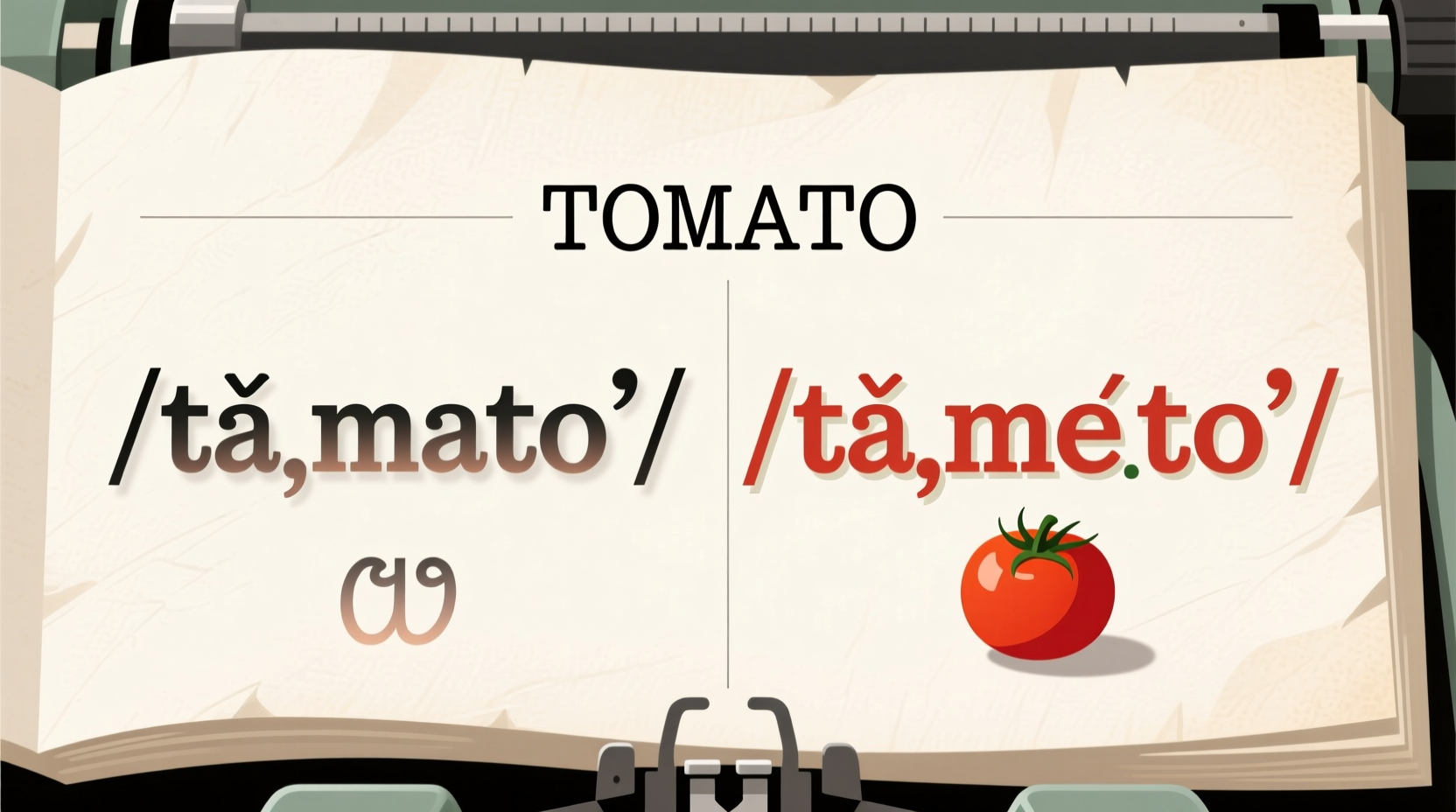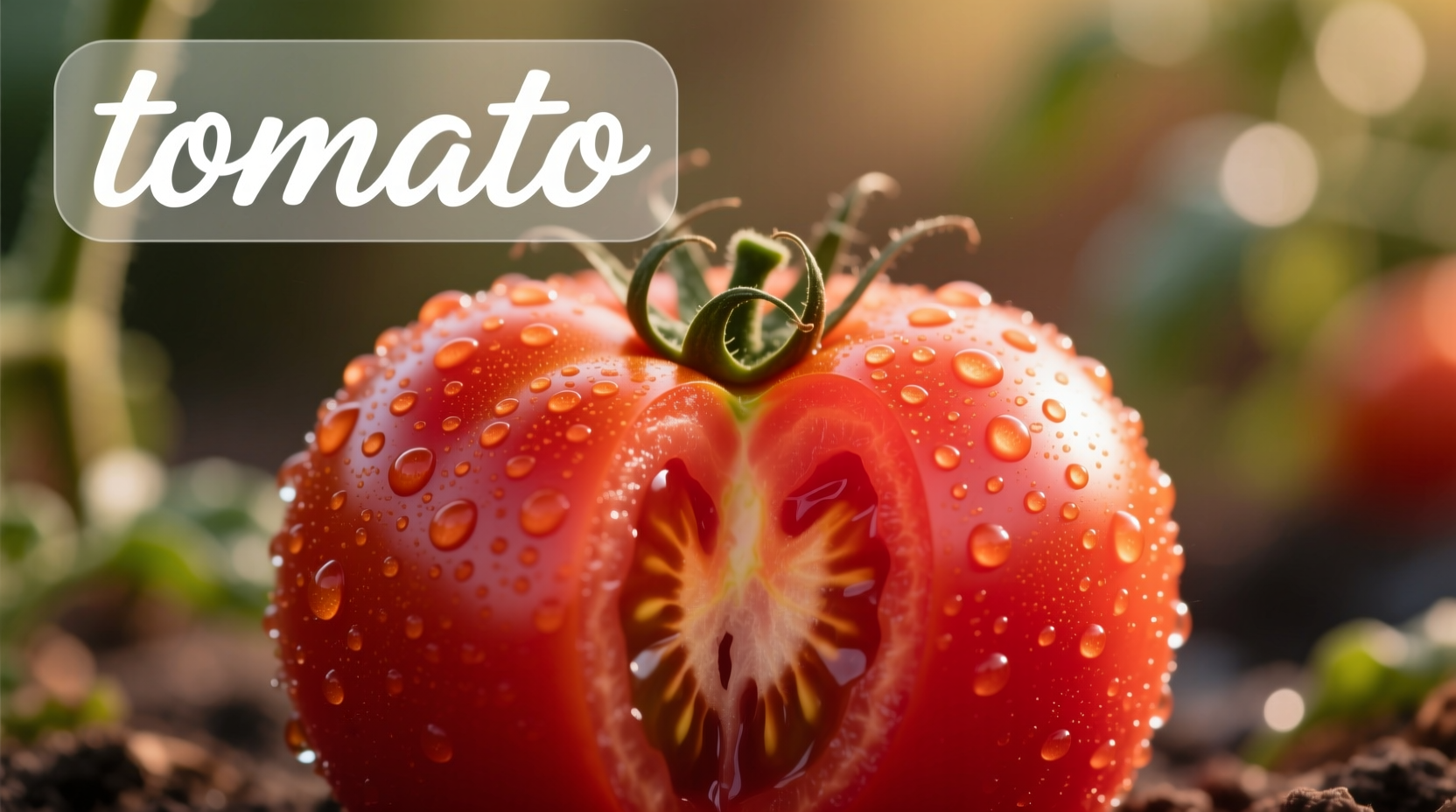The word "tomato" has two standard pronunciations: American English (tuh-MAY-toe /təˈmeɪtoʊ/) and British English (tuh-MAH-toe /təˈmɑːtoʊ/). Both are correct within their respective dialects, with the key difference being the stressed vowel sound in the second syllable.
Have you ever wondered why "tomato" sounds different depending on who's saying it? Whether you're preparing for an English exam, improving your public speaking, or just curious about linguistic quirks, understanding the proper pronunciation of common words like "tomato" builds confidence in everyday communication. This guide delivers clear, authoritative information about tomato pronunciation that you can immediately apply in real conversations.
Mastering Tomato Pronunciation: The Basics
Let's break down the two primary pronunciations you'll encounter worldwide. The word "tomato" contains three syllables, but the critical difference lies in how native speakers treat the second syllable.
| Variation | Phonetic Spelling | Vowel Sound | Stress Pattern |
|---|---|---|---|
| American English | tuh-MAY-toe /təˈmeɪtoʊ/ | Long A (like "day") | Second syllable emphasized |
| British English | tuh-MAH-toe /təˈmɑːtoʊ/ | Broad A (like "father") | Second syllable emphasized |
Notice that both versions stress the second syllable, but the vowel sound differs significantly. Americans use a long "a" sound (like in "day"), while Brits use a broader "a" (similar to "father"). The first and third syllables remain relatively consistent across both versions.
Why Two Different Pronunciations Exist
The divergence in tomato pronunciation stems from historical linguistic evolution. Let's examine how this seemingly simple word developed its dual identities:
Tomato Pronunciation Evolution Timeline
- 1500s: Spanish explorers encounter "tomatl" (Nahuatl word from Aztec civilization)
- 1590s: English adopts "tomahta" from Spanish "tomate"
- 1750s: British English begins shifting toward "tuh-MAH-toe" as part of the Great Vowel Shift
- 1800s: American English preserves older pronunciation "tuh-MAY-toe"
- 1938: Cole Porter immortalizes the difference in "Let's Call the Whole Thing Off"
- Present: Both pronunciations recognized as standard in their respective dialects
According to etymological research from the Online Etymology Dictionary, the word entered English from Spanish "tomate," which came from the Nahuatl (Aztec) word "tomatl." As the word traveled across languages and continents, pronunciation naturally adapted to local speech patterns.
When to Use Each Pronunciation
Understanding context boundaries helps you choose the appropriate pronunciation:
- Professional settings in the US: Use "tuh-MAY-toe" - this is expected in business, education, and media
- International business: Either is acceptable, but consistency matters more than regional accuracy
- Academic linguistics discussions: Recognize both as valid regional variants
- British Commonwealth countries: "tuh-MAH-toe" is standard in UK, Australia, New Zealand
- Non-English speaking countries: Local adaptations often follow American English pronunciation
Linguistic research from the Encyclopedia Britannica confirms that both pronunciations are considered standard within their respective English dialects. Neither version is linguistically superior - they simply represent regional variations that developed historically.

Practical Tips for Perfect Pronunciation
Follow these evidence-based techniques to master both pronunciations:
- Isolate the vowel sound: Practice saying "may" and "ma" separately before adding syllables
- Use minimal pairs: Contrast "mace" (may-s) with "mass" (mah-s) to train your ear
- Record yourself: Compare your pronunciation with native speakers using free language tools
- Contextual practice: Read sentences like "I'll put the tomato in the salad" repeatedly
- Mouth position awareness: For American version, lips spread wider; for British, mouth opens more
Research published by the International Phonetic Association shows that conscious articulation practice significantly improves pronunciation accuracy within 2-3 weeks of regular practice.
Avoiding Common Pronunciation Mistakes
Even advanced English learners often make these errors with "tomato":
- Over-stressing the first syllable: "TOM-uh-toe" (incorrect in both dialects)
- Mixing vowel sounds: "tuh-MAH-toe" with American accent or "tuh-MAY-toe" with British accent
- Adding extra syllables: "to-mah-toe-ee" (common ESL error)
- Confusing with "potato": While similar, some speakers apply different stress patterns
Remember that consistency matters more than regional perfection. As linguist David Crystal explains in his book English as a Global Language, intelligibility trumps regional accuracy in international communication.
Tomato Pronunciation Around the World
While American and British English dominate the discussion, other English variants have their own approaches:
- Indian English: Often follows British pronunciation but with distinctive rhythm
- Singaporean English: Tends toward American pronunciation with local vowel modifications
- South African English: Mixes British vowel sounds with unique stress patterns
- Caribbean English: Frequently shortens to "to-may-do" with dropped final vowel
The Oxford Learner's Dictionaries confirms these regional variations while maintaining that both primary pronunciations remain globally understood.
Putting It All Together: Real-World Application
Now that you understand the linguistic background, here's how to apply this knowledge immediately:
- When traveling to the UK, use "tuh-MAH-toe" to sound more natural
- For American audiences, stick with "tuh-MAY-toe"
- In international settings, choose the version that feels most comfortable to you
- When teaching English, explain both versions to students
- Don't correct others' pronunciation - both are valid
Mastering these subtle pronunciation differences demonstrates cultural awareness and linguistic sophistication. As you practice, remember that language evolution continues - today's "correct" pronunciation might shift in future generations, just as "tomato" has transformed over centuries.











 浙公网安备
33010002000092号
浙公网安备
33010002000092号 浙B2-20120091-4
浙B2-20120091-4